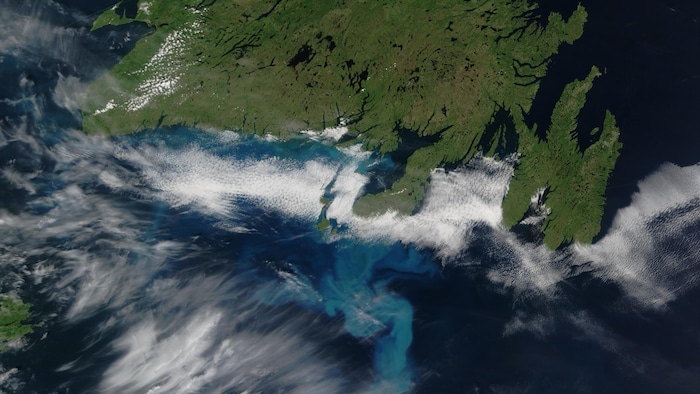Open in full screen mode Phytoplankton in the Atlantic Ocean south of the island of Newfoundland in the summer of 2002. Agence France- Press Speech synthesis, based on artificial intelligence, makes it possible to generate spoken text from text written. The ocean stores, through phytoplankton, 20% more carbon than previously estimated, according to a study published in the journal Nature (New window) (in English). This is an estimate which is very robust and which reinforces the role of ocean biology in long-term carbon capture, Frédéric Le Moigne, oceanographer and marine biologist at CNRS, co-author, told AFP. of this study carried out with Chinese and American researchers.
Global distribution of organic carbon flux from the open ocean surface layer.
New estimate is 15 billion tonnes per year, an increase of around 20% compared to the estimates mentioned by the IPCC (Intergovernmental Panel on Climate Change) in 2021, according to a CNRS press release.
This storage is carried out thanks to phytoplankton, which transforms CO2 into organic tissue through photosynthesis. Some of this phytoplankton, when it dies, sinks from the ocean surface in the form of marine snow.
To measure these marine snow flows, the researchers based themselves on existing databases of carbon concentrations in the ocean measured by oceanographic vessels, explains the researcher. Thanks to this numerical simulation, we succeeded in reconstructing the flows over the global ocean and in particular in regions where we had absolutely no flow measurement.
Loading in progress
“It’s not normal that our network is managed by unions” – François Legault
ELSE ON INFO: “It’s not normal that our network is managed by unions” – François Legault
The logical next step is to estimate how much [carbon] really reaches the bottom of the ocean, at an average depth of 3,800 meters, without being swallowed by marine organisms, notes Mr. Le Moigne .
As it hits the ocean floor, this marine snow turns into sediment and stone, storing carbon for tens of thousands of years.
The estimate carried out by the researchers shows that preserving marine biodiversity is crucial to guarantee this process of biological carbon pump, because we are on an even greater flow than we thought, underlines the researcher at the Marine Environmental Sciences Laboratory (LEMAR) in Plouzané, near Brest.
This process is carried out on tens of thousands of years, it is not enough to counterbalance the current increase in CO2 emissions, he emphasizes, however.
In addition, global warming could weaken this biological carbon pump, he warns.
On time Currently, it is estimated that the ocean absorbs around 30% of the carbon injected into the atmosphere by human activities, mainly through the physical carbon pump (dissolution of carbon in polar seas). p>

